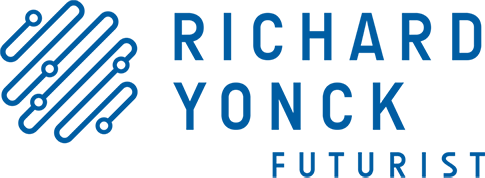Strategies for a Troubled Economy
From the very first time one of our primate ancestors poked a stick into an anthill to retrieve a few tasty morsels, we’ve been on a persistent track of technological betterment. Today, it’s reached the point when it seems a day doesn’t pass that we don’t hear of yet another advancement that will change and improve our lives. Machines that can perform tasks both mundane and complex. Computer programs that duplicate the expertise of the highly skilled. Processes that allow one person to do the job of ten.
Unfortunately, such advances can also have a very negative impact on the welfare of the people and society they should be improving. As we’ve seen repeatedly over the years, such progress can displace not only individual workers, but entire fields and industries as well. While the argument can be made that new technologies create new jobs and opportunities, the reality is often just the opposite: net job losses. Bad as this is, there are indications this trend that will not only continue, but is in fact, accelerating. The coming decades hold considerable potential for catastrophic levels of job loss. Losses that will be tremendously detrimental both for society and the corporate world unless we can adapt.
In the decades ahead, we face a legion of disruptive technologies that will transform the world. Open source 3-D printing that will allow us to cheaply print almost any part or object. Designs and inventions generated by evolutionary algorithms. Molecular nanotechnology that will eventually allow us to build almost anything we can imagine atom by atom. Artificial intelligences that will be increasingly capable of performing even the most human of tasks.
All of these technologies are based on information. Easily accessible, readily replicable information. As each technology develops and matures, there will be tremendous incentive for businesses and individuals to utilize it for maximum benefit and maximum profit. This in spite of the long-term impact on the economy and on society.
We can already see the beginnings of this starting to take place in many of the world’s economies. The efficiency improvements promised by computers and the information revolution are being realized. But we’ve been unprepared for many of the negative aspects of this progress. The still bigger problem, of course, is this is just the beginning. The job loss we see today may only be the tip of tomorrow’s iceberg. If this is allowed to proceed unchecked, the world’s economies could grind to a halt. Following a long, downward spiral, we would eventually reach a point when few businesses are selling because so few people are capable of buying.
It’s often been said that new technologies generate new jobs and this is true up to a point. But in our current stage of technological development, it’s difficult to see these keeping pace with the rapid rise in job losses. New industries, retraining and adapting institutions all take far longer to implement than it does to realize the fruits of exponential progress once it reaches a certain level relative to human time scales.
So what is the solution? Do we somehow impose restrictions or regulations that prevent the advances that will eventually cause these losses? Do we create incentives to retain employees despite their “jobsolescence”?
Such approaches are unlikely to work in a global market governed by competitive forces. The reality is we probably won’t be able to resolve these issues using our existing tools and institutions. In order to fix this, it may be necessary to reinvent commerce itself.
Exactly what form this will take is difficult to say. It may be that businesses will be forced to change their revenue models by moving away from the standard buy-to-own concept. As development times shrink and production costs plummet, it may be both possible and necessary to move toward something entirely different. A subscription model could be one possibility: paying a fee to obtain regular updates of a product or line, just as we do with software. As furniture, food, clothing, even buildings come to be governed by the laws and forces of information and accelerating change, we’ll need to adapt the revenue models that support them.
In addition to this, social programs will likely need to be restructured to better deal with periods of large-scale, extended unemployment. In the current U.S. political climate, this may seem impossible, but I believe it will eventually be deemed necessary, if we are to avoid truly catastrophic downturns. A smarter, more adaptable social safety net would act as a buffer, providing time for new industries to mature and workers to be retrained, while keeping the economy primed and flowing.
Extensive development of lifelong learning will also be essential to ensure workers can meet the needs of emerging fields. It’s been observed that many of yesterday’s jobs have disappeared, just as many jobs a decade from now don’t even exist yet. Adapting worker schedules and funding to support such continuing education will pay big dividends in a rapidly changing world.
It’s very possible we’ll need to rethink our approach to economics and business models many times during the coming century. Such adaptation and restructuring could allow both producers and consumers to more fully realize the benefits of technological progress, while maintaining an economy that protects the existence of both.

